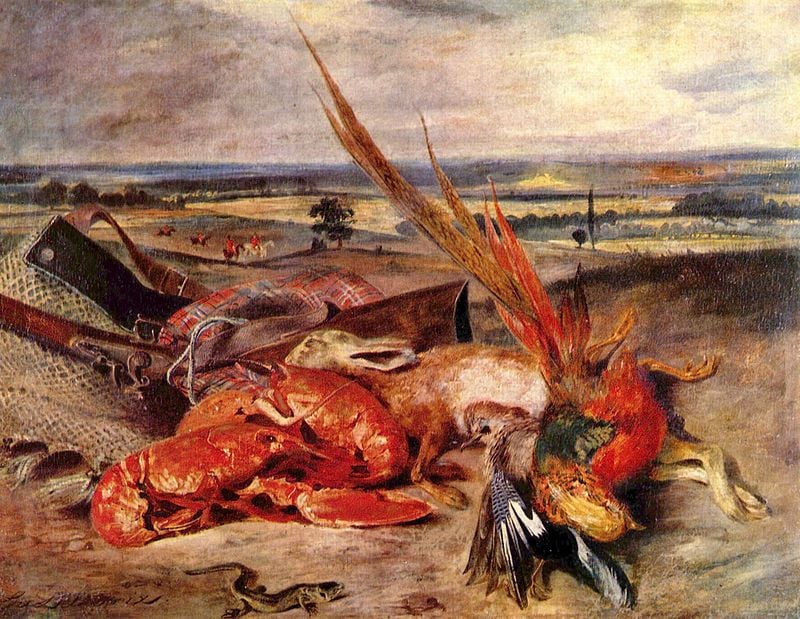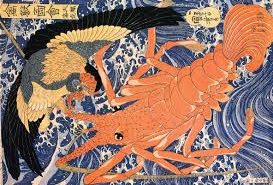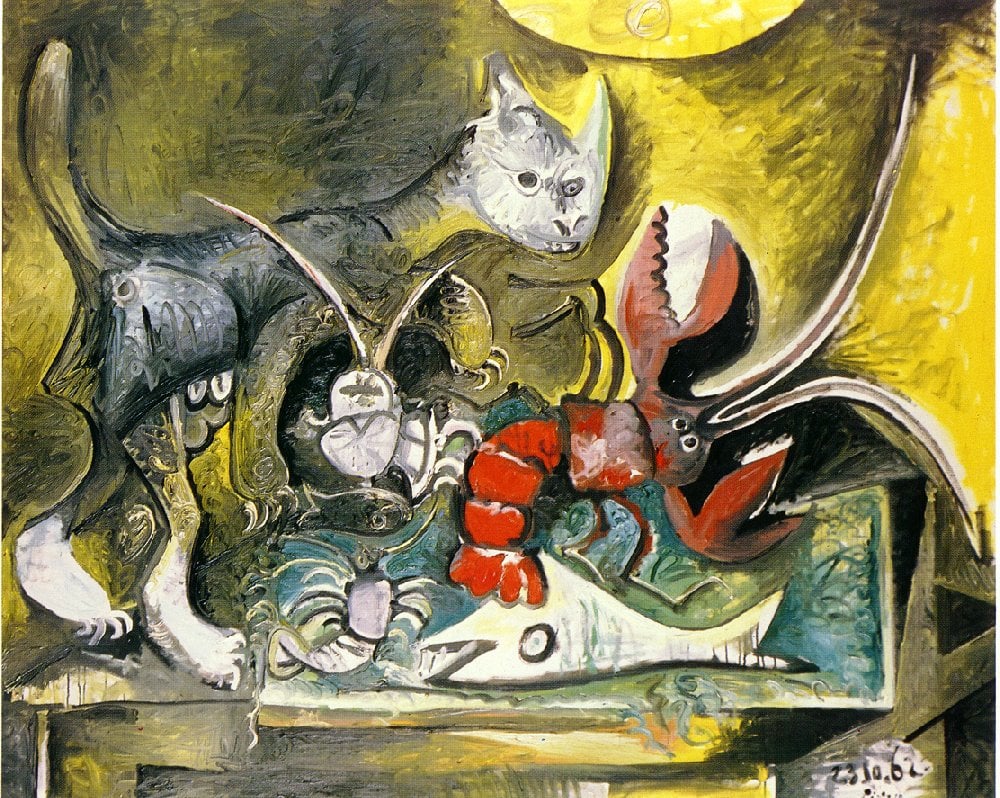Lobster Art Outside of the Kitchen
You might be surprised to know that lobsters are famous for more than just being an iconic symbol of the sea and a delicious source of food. Their fame also extends to the artistic world!
Over the centuries, lobsters have been used as both featured objects in works of art, or played a supporting role in a paintings or photographs. Our favorite crustacean has quite an artistic legacy! Although they weren’t a frequent subject of choice for artists, they’ve definitely had their 15 minutes of fame, as represented below.
In 1495, a young painter by the name of Albrecht Dürer was captivated by nature’s most exotic and unusual animals, and chose to feature a lobster as a fine representative of this in a pen drawing created during his first Italian excursion. The lobster is the only object on the page and fills it. Dürer used it as material for independent study versus one for more consistent study.
 Albrecht Dürer, A lobster, 1495, Staatliche Museen, Berlin
Albrecht Dürer, A lobster, 1495, Staatliche Museen, BerlinEugene Delacroix was a 19th Century artist influenced by the English painters of the time, and painted a lobster as part of a group of art pieces he sent to the Salon of 1827. In a letter to a friend named Soulier he stated: ‘I have finished the General’s animal picture, and I have dug up a rococo frame for it, which I have had regilded and which will do for it splendidly. It has already dazzled people at a gathering of amateurs, and I think it would be amusing to see it in the Salon.’
 Eugene Delacroix, Still Life with Lobsters, 1826-1827, Musée du Louvre, Paris
Eugene Delacroix, Still Life with Lobsters, 1826-1827, Musée du Louvre, ParisJapanese ukiyo-e style art was a distinctive style of painting and woodblock print artistry that flourished from the 17th through 19th centuries practiced by a select group of highly recognized Japanese artists. Utagawa Kuniyoshi was one of the remaining grand masters of this artistic technique that included artwork of landscapes, Kabuki actors, mythical animals, and beautiful Japanese women. One of Kuniyoshi’s featured works was of a lobster under the attack of a hawk or other predatory bird. A distinctive feature of these paintings is often seen in the facial expressions of the subjects.
 Utagawa Kuniyoshi, Lobster, XIX century
Utagawa Kuniyoshi, Lobster, XIX centuryThe German artist and writer, Lovis Corinth, created works as a printer and printmaker. Having spent time studying in Munich and Paris, he eventually assumed the title of president of the Berlin Secession group, following in the footsteps of Max Liebermann. His style was thought to be a fusion of the impressionist and expressionist forms of painting, popular during the early 1900’s. As a naturalistic painter, vibrant color was one of the hallmarks of his works, which can be seen in the lobster in this painting.
 Lovis Corinth, Still Life with Buddha-Lobsters and Oysters, 1916
Lovis Corinth, Still Life with Buddha-Lobsters and Oysters, 1916In the 1960’s, the famous artist Pablo Picasso created many works of art in his later years, more than he’d ever done at other times in his life. His works were a mix of comical design and fantastical imagery. Picasso’s variances on other master artists’ work was recognized for its uniqueness. Artists such as Velázquez and Delacroix were inspirations for Picasso, including this stil of a cat and lobster, which mimics colors that Delacroix has used.
 Pablo Picasso, Still life with cat and lobster, 1962, private collection
Pablo Picasso, Still life with cat and lobster, 1962, private collectionFrom the cultural movement of Surrealism, the iconic surrealist artist Salvador Dalí created among his many works of art, a Lobster Telephone that was a striking example of the kind of work he was best known for: combining astonishing and bizarre images in often dramatic ways. In this piece, Dali expresses a belief that he held in which lobsters and telephones conveyed intense overtones of sexuality.
 Salvador Dali, Lobster Telephone, 1936, Tate
Salvador Dali, Lobster Telephone, 1936, TateSo as you can see, lobsters and their mystique have captured both the artistic as well as the culinary interests of human beings over the centuries, and have played a role in society and culture that goes way beyond their reputation as an exotic, luxury food item. It’s no wonder why we prize them today!